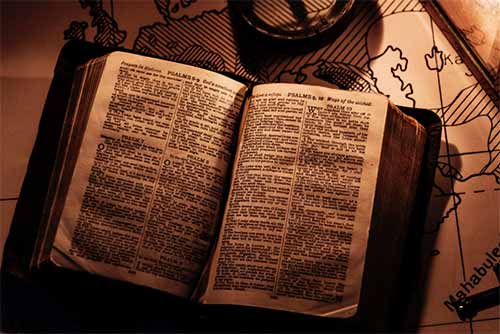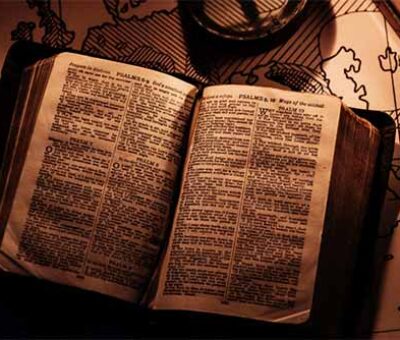The Accuracy of the Biblical Records
 The question often arises when discussing the biblical records, “How can a document that has been copied over and over possibly be reliable? Everyone knows there are tons of errors in it.” While it is true that the documents have been copied many times, we often have misconceptions about how they were transmitted. All ancient documents were copied by hand before the advent of the printing press in the 16th century.
The question often arises when discussing the biblical records, “How can a document that has been copied over and over possibly be reliable? Everyone knows there are tons of errors in it.” While it is true that the documents have been copied many times, we often have misconceptions about how they were transmitted. All ancient documents were copied by hand before the advent of the printing press in the 16th century.
Does The Bible contain copyist errors of the scribes?
Great care was exercised in reproducing these manuscripts. We often assume that one copy was made and then another from that and another from that and so on, each replacing the copy it was reproduced from. This is not how manuscripts copying worked. Copyists were usually working from one or two very old documents. They would make many copies of their source copy, all the while preserving their source and comparing the copies they have made.
Josephus tells how the Jews copied the Old Testament:
“We have given practical proof of our reverence for our own Scriptures. For although such long ages have now passed, no one has ventured either to add, or to remove, or to alter a syllable; and it is an instinct with every Jew, from the day of his birth, to regard them as the decrees of God, to abide by them, and, if need be, cheerfully to die for them” (Against Apion, Book I, sec., 8, p. 158).
Josephus made no exaggeration. The Jewish copyists knew exactly how many letters were in every line of every book and how many times each word occurred in each book. This enabled them to check for errors (Shelly, Prepare to Answer, p. 133). The Jews believed that adding any mistake to the Scriptures would be punishable by Hell – unlike the modern secretary who has many letters to type and must work hard to keep his job, and consequently feels that mistakes are inevitable. Great care is exercised with scriptures when someone holds a conviction such as this. But even with the great amount of care exercised in copying, errors have crept into the manuscripts. No one questions that spelling errors, misplaced letters, and word omissions have occurred. What is not true is that these errors have gradually built up over time so that our copies look nothing like the originals. This view was commonly held until recently.
In 1947 the accuracy of these documents was confirmed by the Dead Sea Scrolls. These scrolls were found in caves in the desert near the Dead Sea by a shepherd boy. Before the discovery of these scrolls, the earliest Old Testament manuscripts we had were from about 980 A.D. The manuscripts discovered in the caves dated from 250 B.C. to shortly after the time of Christ. In careful comparison of the manuscripts it was confirmed that the copies we had were almost precisely the same as those which date over 1000 years earlier.
No other historical literature has been so carefully preserved and historically confirmed.
When we come to the New Testament we see a similar phenomenon. There are over 5,000 Greek New Testament manuscripts in existence. This is by far more than any other historical documents, which usually have maybe a dozen copies from very late dates. The New Testament manuscripts are many and old and they are spread over a wide geographical area. What this enables the New Testament historian to do is collect manuscripts from Jerusalem and Egypt and Syria and other places and compare them for variations. And variations do exist, but as with the Old Testament they are relatively few and rarely important to the meaning of the text. What these manuscripts demonstrate is that different families of texts existed very early that were copied from the original or good copies of the original. This allows us to trace the manuscripts back to the source as one would follow the branches of a tree to get to the trunk. Aside from the manuscripts themselves, “virtually the entire New Testament could be reproduced from citations contained in the works of the early church fathers. There are some thirty-two thousand citations in the writings of the Fathers prior to the Council of Nicea (325)” (Moreland, Scaling the Secular City, p. 136).
Related Articles
Christianity Introduction | The resurrection of Jesus Christ | The Bible as history | Christianity and miracles | about Jesus Christ
Translation of the Bible discussion. Copyright christianadvice.net 2001


